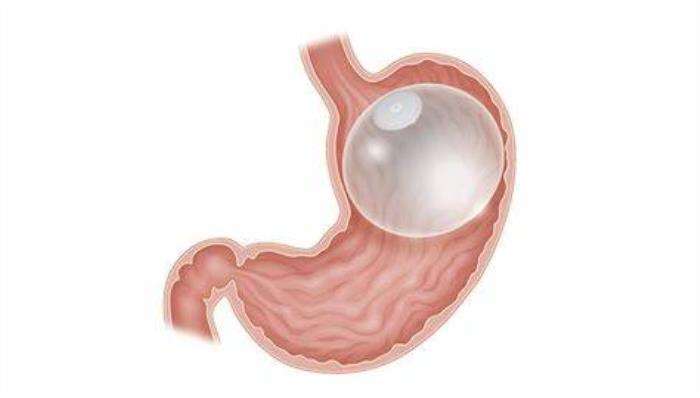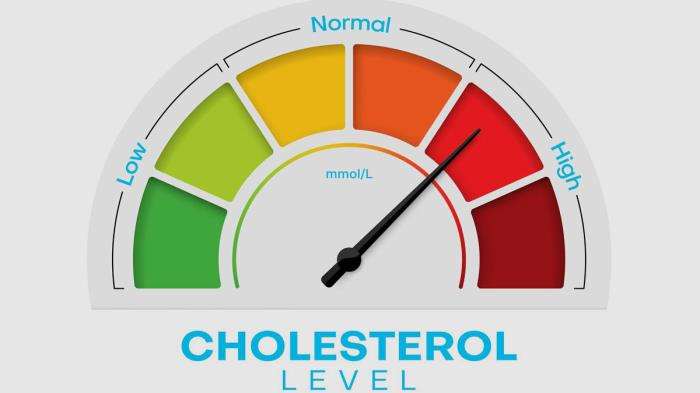Intragastric balloon treatment plays a significant role in improving cardiovascular health by supporting weight loss. As excess weight is a major risk factor for cardiovascular diseases, the reduction of body fat through balloon placement can lead to notable improvements in various cardiovascular metrics, such as blood pressure and cholesterol levels. This connection highlights the importance of weight management in reducing the risk of heart disease and improving overall heart health.
How the Intragastric Balloon Affects Blood Pressure Post-Treatment
Post-treatment, the intragastric balloon can have a positive impact on blood pressure. As patients lose weight, there is a reduction in the strain on the heart and blood vessels, leading to lower blood pressure. This is particularly beneficial for individuals who suffer from hypertension, as even modest weight loss can result in significant improvements in blood pressure levels, reducing the need for medication and lowering the risk of heart-related complications.
The Impact of Weight Loss from Intragastric Balloon on Cholesterol Levels
Weight loss induced by the intragastric balloon treatment can significantly improve cholesterol levels. As excess fat is reduced, the body’s lipid profile often improves, with a decrease in levels of LDL (bad) cholesterol and an increase in HDL (good) cholesterol. This shift contributes to better cardiovascular health by reducing the risk of atherosclerosis, heart attack, and stroke.

Can Intragastric Balloon Treatment Help Lower High Blood Pressure?
Yes, intragastric balloon treatment can help lower high blood pressure, especially in individuals with obesity. By aiding in weight loss, the balloon reduces the load on the heart and the vascular system, leading to a decrease in both systolic and diastolic blood pressure. This effect is particularly noticeable in individuals who are overweight or obese and who suffer from obesity-related hypertension.
The Role of Weight Loss in Managing Cholesterol Levels After Balloon Placement
The weight loss achieved through intragastric balloon placement directly influences cholesterol levels. As patients shed excess weight, improvements in metabolic processes can lead to more balanced cholesterol levels. A healthier weight reduces the amount of fat circulating in the blood, contributing to lower triglycerides, improved HDL levels, and a reduction in harmful LDL cholesterol. This reduction in cholesterol levels supports a healthier cardiovascular system and lowers the risk of heart disease.
How Intragastric Balloon Reduces the Risk of Heart Disease by Lowering Cholesterol
The intragastric balloon reduces the risk of heart disease primarily by facilitating weight loss, which in turn lowers cholesterol levels. Excess weight is a major contributor to the buildup of fatty plaques in the arteries, a condition known as atherosclerosis, which can lead to heart disease. By helping patients achieve significant weight loss, the balloon reduces the levels of LDL cholesterol and improves overall heart health, thus reducing the likelihood of heart disease.
The Mechanisms Behind Improved Blood Pressure and Cholesterol with Intragastric Balloon
The mechanisms behind improved blood pressure and cholesterol with the intragastric balloon are rooted in weight loss and metabolic changes. As the balloon limits food intake, it results in a caloric deficit that promotes fat loss. This reduction in body fat improves insulin sensitivity, lowers systemic inflammation, and enhances lipid metabolism, all of which contribute to healthier cholesterol levels and more controlled blood pressure. These changes are key to reducing the risk of cardiovascular complications.
How the Intragastric Balloon Can Contribute to Reducing Hypertension
The intragastric balloon can help reduce hypertension by promoting weight loss, which in turn has been shown to lower blood pressure. The balloon works by reducing stomach capacity, encouraging portion control, and leading to a calorie deficit, helping to decrease the strain on the cardiovascular system.
The Effect of the Intragastric Balloon on Lipid Profiles and Cholesterol Ratios
Intragastric balloon treatment can positively influence lipid profiles and cholesterol ratios by encouraging weight loss, which is often associated with improvements in total cholesterol, LDL ("bad" cholesterol), and triglyceride levels. These changes contribute to better cardiovascular health.
Monitoring Blood Pressure and Cholesterol During the Intragastric Balloon Journey
Monitoring blood pressure and cholesterol levels during the balloon treatment process is essential for tracking improvements in cardiovascular health. Regular check-ups ensure that any necessary adjustments to diet, exercise, or medication can be made to support healthy blood pressure and lipid profiles.
How Diet and Physical Activity Influence Blood Pressure and Cholesterol After Balloon Treatment
Post-balloon, diet and physical activity play a critical role in further improving blood pressure and cholesterol. A balanced diet, low in sodium and unhealthy fats, and regular physical activity, such as cardiovascular exercise, can optimize the benefits of weight loss from the balloon and contribute to ongoing cardiovascular health improvements.

The Role of Regular Medical Checkups in Assessing Cardiovascular Health During Treatment
Regular medical checkups are vital to assess the effectiveness of the intragastric balloon treatment in improving cardiovascular health. These visits allow for the monitoring of blood pressure, cholesterol, and other cardiovascular markers, ensuring that patients are on track for long-term success and health.
The Connection Between Intragastric Balloon and Reduced Risk of Stroke and Heart Attack
By reducing weight and improving blood pressure and cholesterol levels, the intragastric balloon can help lower the risk of stroke and heart attack. Weight loss from the balloon may reduce the strain on the heart and blood vessels, leading to a lower likelihood of cardiovascular events.
How Blood Pressure and Cholesterol Impact Overall Health After Balloon Removal
After the balloon is removed, maintaining healthy blood pressure and cholesterol levels remains crucial to long-term health. Elevated blood pressure and cholesterol can contribute to a range of cardiovascular issues, so continued lifestyle modifications such as diet, exercise, and regular monitoring are necessary to sustain heart health.
Managing Blood Pressure and Cholesterol Levels Long-Term Post-Balloon
Long-term management of blood pressure and cholesterol after balloon removal involves maintaining a healthy weight, eating a heart-healthy diet, staying active, and regularly checking cardiovascular health markers. Support from healthcare professionals can help manage any ongoing risks and keep these levels within a healthy range.
Can the Intragastric Balloon Help Prevent Metabolic Syndrome?
Yes, the intragastric balloon can help prevent metabolic syndrome by promoting weight loss and improving blood pressure, cholesterol levels, and blood sugar control. These changes reduce the risk factors associated with metabolic syndrome, including obesity, insulin resistance, and cardiovascular disease.
The Importance of a Balanced Diet in Supporting Cardiovascular Health During the Intragastric Balloon Journey
A balanced diet rich in fruits, vegetables, lean proteins, and whole grains supports cardiovascular health during and after balloon treatment. Proper nutrition helps manage weight, blood pressure, and cholesterol, contributing to better long-term outcomes and reducing the risk of heart disease.
How the Intragastric Balloon Supports Overall Health Beyond Weight Loss
Beyond weight loss, the intragastric balloon can support overall health by improving metabolic health, reducing inflammation, and enhancing cardiovascular function. The balloon's role in promoting healthier lifestyle habits can contribute to better quality of life and long-term well-being.
Success Stories: Patients Who Achieved Better Cardiovascular Health with Intragastric Balloon Treatment
Many patients report significant improvements in cardiovascular health after undergoing intragastric balloon treatment. Success stories often highlight reductions in blood pressure, cholesterol, and overall risk of heart disease, demonstrating how weight loss from the balloon can lead to healthier hearts and reduced risk of cardiovascular events.
Long-Term Effects of Intragastric Balloon on Blood Pressure and Cholesterol After Removal
In the long term, the effects of the intragastric balloon on blood pressure and cholesterol are sustained with continued weight management, healthy eating, and regular physical activity. Many patients experience lasting improvements in their cardiovascular health, reducing the likelihood of hypertension and high cholesterol.
Best Intragastric Balloon Treatment in India
The Best Intragastric Balloon Treatment in India offers a non-surgical weight-loss solution by placing a balloon in the stomach to reduce hunger and promote healthy eating habits.
Best Intragastric Balloon Hospitals in India
The Best Intragastric Balloon Hospitals in India are equipped with advanced endoscopy technology and skilled medical teams, providing safe and effective weight-loss treatments.
Intragastric Balloon Treatment Cost in India
The Intragastric Balloon Treatment Cost in India is cost-effective, offering patients an affordable and efficient option for achieving significant weight loss under expert care.
Best Intragastric Balloon Specialists in India
The Best Intragastric Balloon Specialists in India are experienced in performing this procedure, providing personalized guidance and comprehensive support to ensure successful weight-loss outcomes.
FAQ Section
1. How does the intragastric balloon affect blood pressure?
The intragastric balloon can lower blood pressure by promoting weight loss, which reduces the strain on the heart and blood vessels. As a result, many patients experience significant improvements in blood pressure levels.
2. Can the intragastric balloon help lower cholesterol levels?
Yes, weight loss associated with the intragastric balloon often leads to improvements in cholesterol levels, including reductions in LDL cholesterol and triglycerides, contributing to better overall cardiovascular health.
3. How soon after treatment can I see improvements in my blood pressure and cholesterol?
Improvements in blood pressure and cholesterol can be seen within weeks to months after the balloon is placed, as the body begins to lose weight and adopt healthier lifestyle habits.
4. Do I still need to monitor my blood pressure and cholesterol after the balloon is removed?
Yes, ongoing monitoring of blood pressure and cholesterol after balloon removal is important to ensure that weight loss and lifestyle changes continue to have a positive impact on cardiovascular health.
5. How does weight loss from the balloon influence cardiovascular health?
Weight loss from the balloon improves cardiovascular health by reducing the burden on the heart, lowering blood pressure, and improving cholesterol levels, all of which contribute to a lower risk of cardiovascular diseases, including heart attacks and strokes.